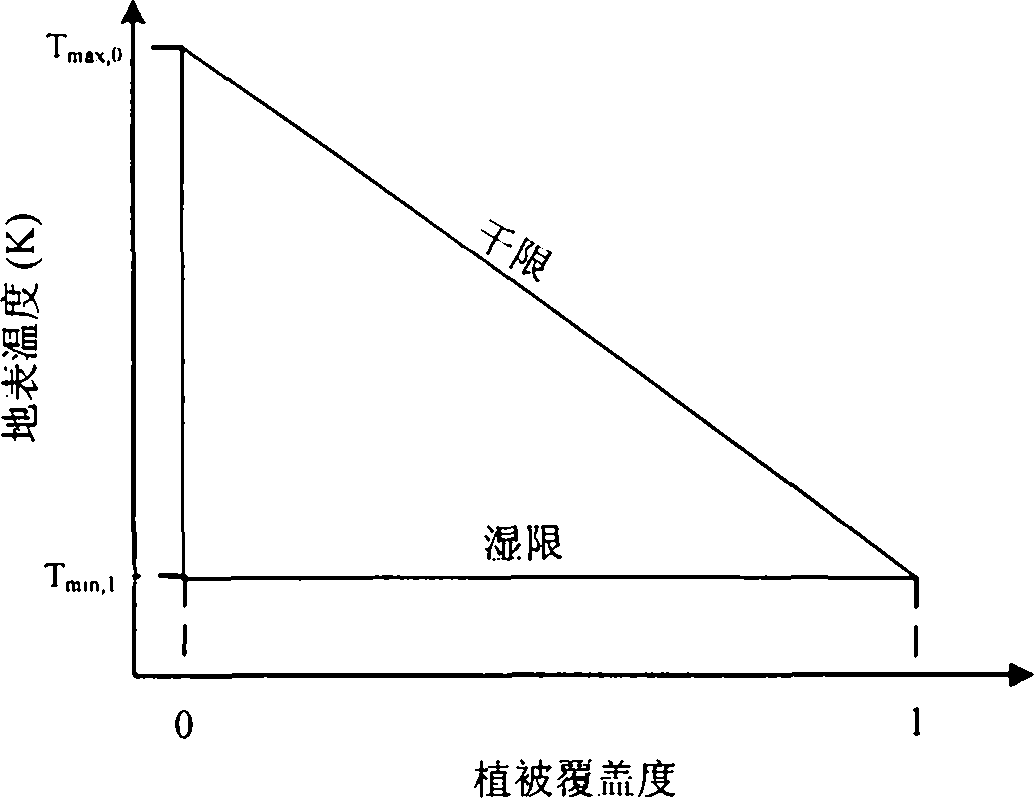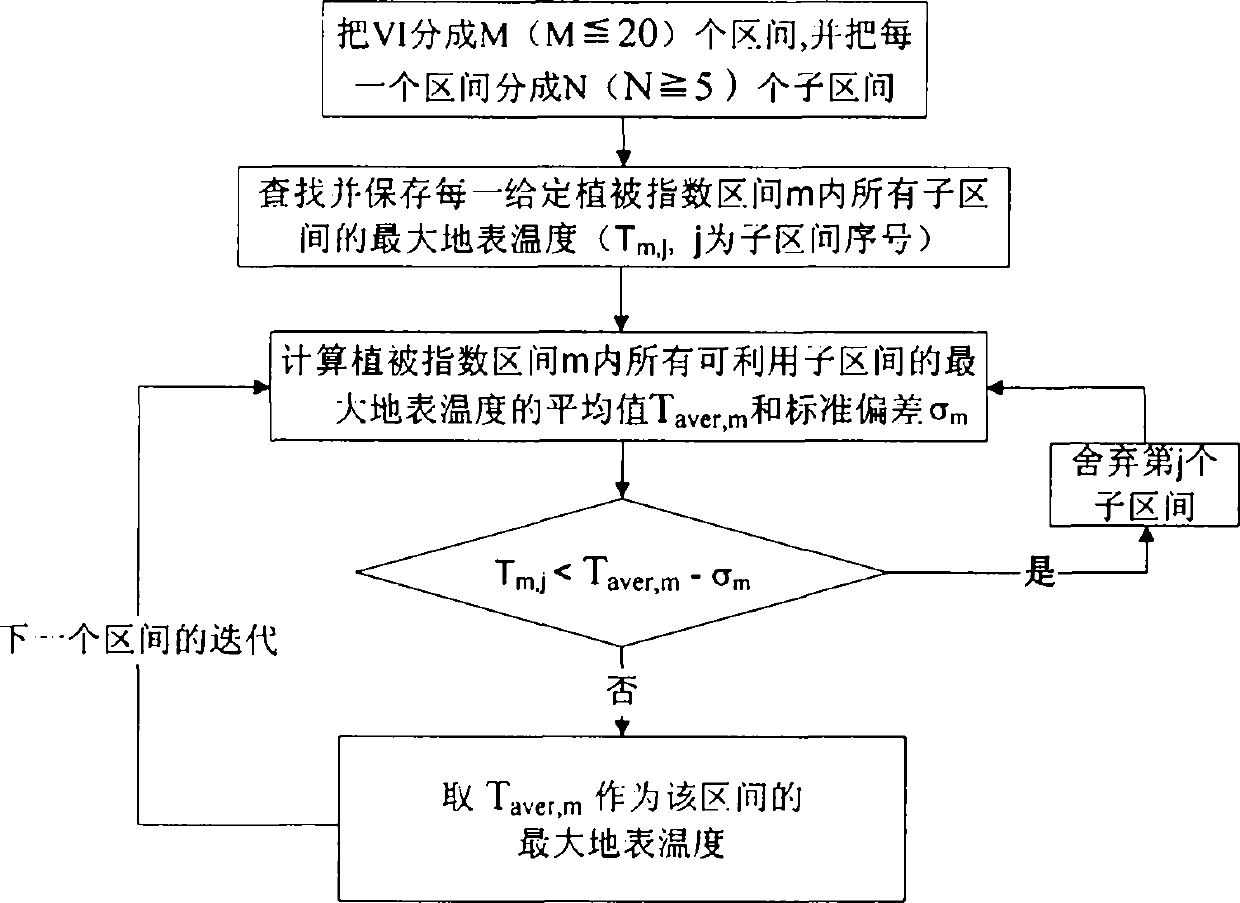Land surface temperature-vegetation index feature space dry and wet limit selecting method and device
A technology of vegetation index and surface temperature, applied in the direction of electrical digital data processing, special data processing applications, material inspection products, etc., can solve the problems of deviation of dry and wet limits from the real situation, and the influence of false "wet points"
- Summary
- Abstract
- Description
- Claims
- Application Information
AI Technical Summary
Problems solved by technology
Method used
Image
Examples
Embodiment 1
[0082] This example takes the remote sensing inversion of surface evapotranspiration as an example, as figure 1 Shown, the concrete implementation method of the present invention is as follows:
[0083] 1. Determine the size of the study area and the spatial resolution of the pixels, and initially construct the input data set of the surface temperature-vegetation index feature space. The surface temperature-vegetation index feature space is the surface temperature and vegetation index feature space.
[0084] The size of the study area should be set as far as possible to meet the condition that the relative soil moisture content and vegetation coverage of the surface layer have a full range of variation (0-1), and at the same time, it is necessary to ensure that the atmospheric forcing within the space is similar. Since the spatial resolution of satellite remote sensing thermal infrared band data is lower than that of visible light and near-infrared bands, in order to ensure th...
Embodiment 2
[0115] On the basis of the above examples, if Figure 5 As shown, the steps for estimating regional evapotranspiration using the dry and wet limit selection method of the surface temperature-vegetation index characteristic space of the present invention are:
[0116] After completing the steps 1-4 above, the following steps should be carried out when estimating regional evapotranspiration:
[0117] 5. Estimate the evaporation ratio pixel by pixel in the feature space.
[0118] The evaporation ratio (EF) per pixel in the feature space is calculated by the following formula:
[0119] EF = φ Δ Δ + γ
[0120] Among them, γ is the hygrometer constant, 0.066kPa / ℃; Δ is the slope of the temperature-saturated water vapor pressure curve; φ is a comprehensive parameter. For feature spaces (such as figure 2 Shown) Any pixel i(VI, T a ) value of φ:
[0121] ...
PUM
 Login to View More
Login to View More Abstract
Description
Claims
Application Information
 Login to View More
Login to View More - R&D Engineer
- R&D Manager
- IP Professional
- Industry Leading Data Capabilities
- Powerful AI technology
- Patent DNA Extraction
Browse by: Latest US Patents, China's latest patents, Technical Efficacy Thesaurus, Application Domain, Technology Topic, Popular Technical Reports.
© 2024 PatSnap. All rights reserved.Legal|Privacy policy|Modern Slavery Act Transparency Statement|Sitemap|About US| Contact US: help@patsnap.com










